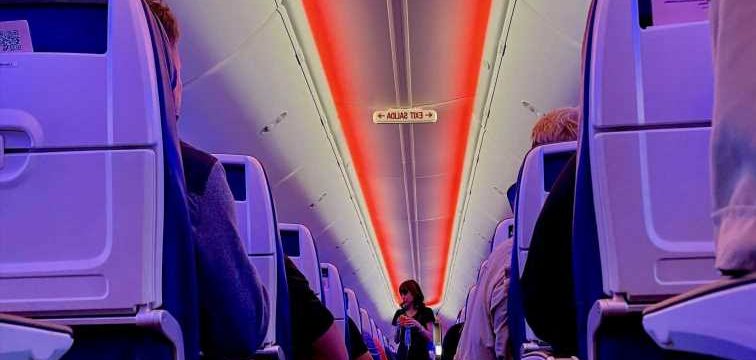CRASHES are extremely rare on aircraft, with many regarding it as one of the safest forms of travel.
In the event of accident though, it is important to know what to do. Here are some tips on how to stay safe whilst in the air.
The safest seats of the plane are supposedly towards the back
What is the safest seat to sit in on a plane crash?
A seat at the back of the plane, while not popular with travellers who want to get off the plane quickly, could be the safest place to sit.
According to a 2015 study, seats in the middle of the cabin had the highest fatality rate at 39 per cent, followed by a 38 per cent fatality rate in the front.
Seats at the back of the cabin had the lowest fatality rate at 32 per cent.
The Aviation Safety Network analysed 65 plane crashes and found seats in the back to be safest in over half of the incidents, based on survival rates.
READ MORE ON TRAVEL

Everything you need to know about countersigning a passport

I'm a travel expert – here's a clever hack to save on your luggage
Harro Ranter chief executive of the Aviation Safety Network, told the Express: "I cannot think of anything that would make sitting upfront safer [and] in an actual accident, best chances of survival are usually in the rear."
A middle seat at the back of a plane was found to be the safest, with a 28 per cent mortality rate – compared to the worst, an aisle seat in the middle of the cabin, which has a mortality rate of 44 per cent.
How to stay safe on a flight
There are other ways that passengers can ensure safety on a flight. Here are some tips for the next time you fly.
Wearing the right clothes
What you wear can also make a difference.
READ MORE IN THE SUN

Maya Jama replaces Kate Moss to sign megabucks deal for iconic brand

Wife of trans rapist sent to female prison brands gender-switch 'a sham'

Frisbee-chasing pet leads fellow canines in Dog Photography Awards

I asked my dad Muhammad Ali which fight was his toughest… his answer surprised me
One of the most important things to wear on a plane are your shoes, and you should avoid taking them off when boarding.
A study by Boeing found that half of plane crashes happen during take-off and landing.
After a crash, fire or broken glass could obstruct the aisle, making it hard to escape barefoot.
Christine Negroni, plane crash expert and author of The Crash Detectives: Investigating The World's Most Mysterious Air Disasters, told Sun Online Travel that there are a lot of things passengers could do to help themselves after a crash.
She said: "One of the best things people can do is put their shoes on for take-off and landing. This is still not required by many airlines and I think it ought to be.
"When people are getting off a plane in a crash, there can be fire as well as debris, it could be cold and wet. You could wind up stepping on a big shard of aluminium."
Flammable materials are also a no-no, along with baggy clothing – so you should opt for cotton or wool clothing over polyester or nylon, as well as tighter trousers over loose dresses.
Christine added: "In terms of clothing, anything not too free flowing is a good idea. In the case of this flight, it would have been good to be wearing jeans, but you obviously don't want to go on every flight dressed for combat.
"Mainly err on the side of caution. Pick sneakers over high heels, pick natural fibres over synthetic, and take tight-fitting clothes over loose-fitting."
Removing sharp objects from pockets
A Boeing pilot advised passengers to always remove sharp objects from your pockets.
The reason being that you could damage the emergency slide if there is something sharp on you.
Count the seats to the nearest emergency exit
It is advisable to count the number of seats there are between you and the nearest emergency exit.
This is because in the event of an accident, if visibility is poor, you will be able to guide yourself and others to the exit.
Don't lace fingers during brace position
The way you do the brace position could impact your survival as lacing your fingers could badly injure you.
Passengers are supposed to put their head between their knees, with their hands over the top to protect the back of the skull.
The temptation is to lace the fingers while doing this, to keep the hands in place during what would likely be quite a bumpy journey.
A Reddit user said: “In the event of a situation where passengers have to cover their heads, you do not 'lock' your fingers on your head but place one hand on top of the other.
“If something falls on your hand/head, you'll still have one good hand to use.”
However, plane crashes are still very rare – with fatal accidents just one in every five million flights.
Source: Read Full Article

